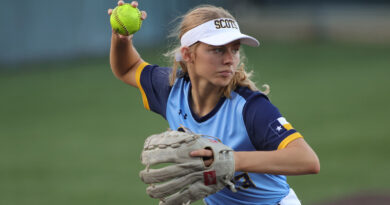From Sports Injury to Med School
In 1998, Green Bay Packers offensive tackle John Michels tore his anterior cruciate and medial collateral ligaments, leading to six reconstructive knee surgeries and the end of his NFL career.
Nearly 20 years later, Michels’ career still involves sports. But instead of a field, he goes to work in an office in Preston Center, where he helps prevent other athletes from suffering the same fate.
Today, Dr. John Michels, who went to medical school at the University of Southern California after his injury, works at Interventional Spine and Pain, treating patients with tendonitis, sprains, and other conditions often caused by repetitive sports.
“I had no plans of becoming a doctor before my injury,” he said. “Through the course of those six knee surgeries and seeing that an injury had stolen my greatest passion in life, I said, ‘You know what, if I can keep that from happening to other people then that would be a life well lived.’”
The University Park resident, who treats everything from migraines to tendonitis to chronic joint pain, spoke recently about how to prevent injuries big and small for adults and especially for young athletes.
“Encourage your kids to get involved in sports, but if your child is really, really not interested, then their likelihood of getting injured is far greater than that of a child who is out there having fun and actively willing to play the sport,” he said.
DR. MICHELS’ TIPS FOR ATHLETES:
Play more than one sport.
“Kids are being asked to specialize in a sport at a younger and younger age. What we’re seeing are repetition injuries, over-use injuries that are very preventable. Multi-sport athletes tend to be the ones that are the most successful, because they’re better all-around athletes. Allowing kids to play multiple sports is only going to help them prevent injuries and become better all-around athletes.”
Give yourself time to rest.
“Have at least one day off a week to allow your body to rest and recover. The American Academy of Pediatric Medicine actually recommends at least one month off of a sport in any given year.”
Warm up and warm down.
“Make sure you’re loose, stretched, and that your muscles and joints are properly warmed up prior to playing the sport to reduce injuries. And then, warming down afterwards, making sure you’re
stretching after your performance and that your muscles are nice and loose will also help prevent injuries in the long run.”
Speak up.
“If something hurts, tell someone about it. Because oftentimes if we catch it early enough, a serious injury can be prevented. Younger people tend to bounce back from their injuries faster. Most injuries that children suffer, with a little bit of rest, they heal very quickly.”
Make sure your equipment fits.
“When you’re performing your sport and your shoes don’t fit right, your helmet or shoulder pads don’t fit right, any of your protective equipment isn’t fitting right, you’re more prone to injury.”
Have fun.
“Let’s not forget the whole reason we play in the first place: It’s to go out and really just have fun. Parents need to take the pressure off our kids, let them find their passion, and let sports
be a part of teaching them greater life lessons like team work, self discipline, and the value of preparation.”








